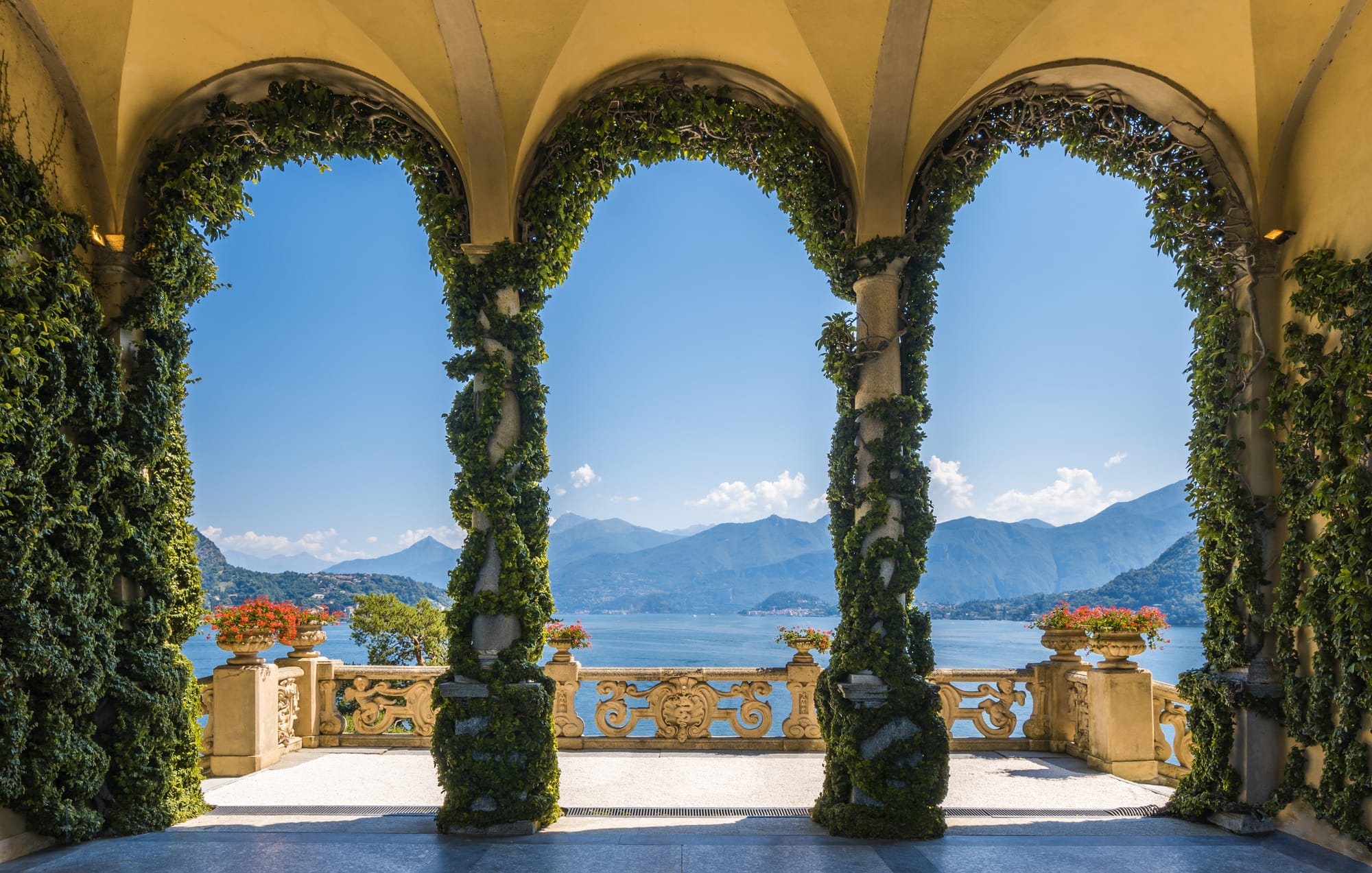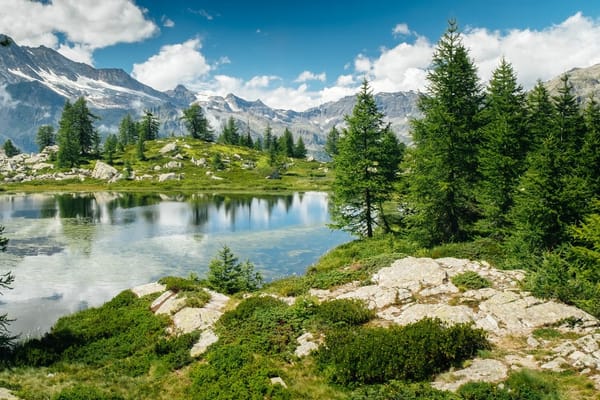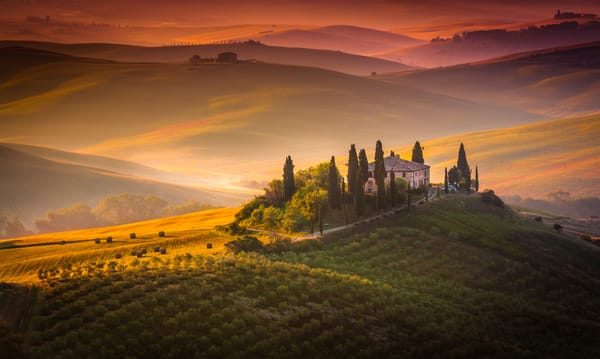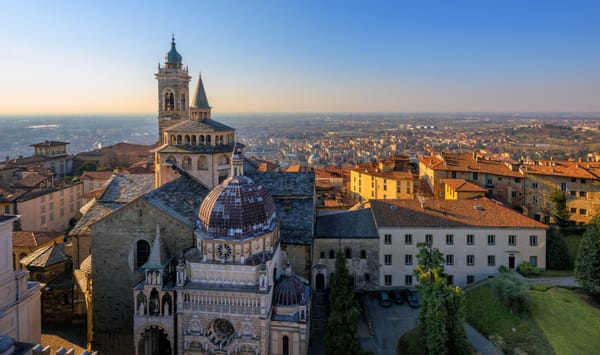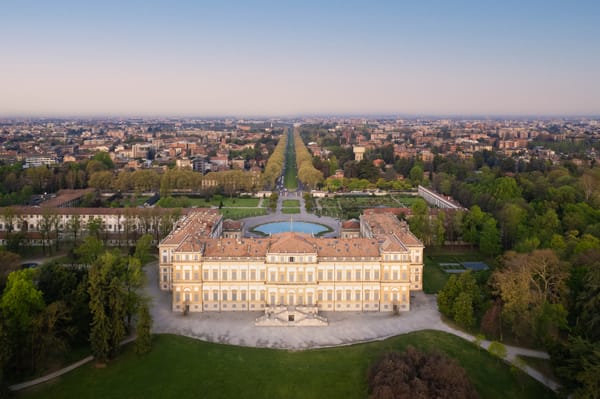Nestled at the foothills of the Alps in Northern Italy's Lombardy region, Lake Como, or Lago di Como, is a destination of sublime beauty and timeless elegance. Its distinctive inverted 'Y' shape, carved by the slow, immense power of ancient glaciers, holds a landscape that seems to have been meticulously designed to stir the human soul. For centuries, it has been more than just a place on a map; it has been a muse. From the Roman poet Virgil, who wrote of its majestic shores, to the Romantic composer Franz Liszt, whose compositions echoed the turbulent and tender moods of the lake, many have sought refuge and inspiration in its dramatic scenery. To visit Lake Como is to step into a living painting, a landscape where every vantage point offers a new composition of breathtaking beauty.
This guide is for the meticulous planner who delights in discovering not just the celebrated icons but also the quiet, authentic corners that reveal the true character of this Italian jewel. Here, a journey is more than a checklist of sights; it is an immersive exploration of history, cuisine, and a way of life—the famous dolce vita—that continues to enchant the world.
In this article:
August 29, 2025: this content has been updated for accuracy and freshness.
Why visit Lake Como? The ultimate Italian lakes destination
From its stunning natural landscapes to its world-famous historic villas and charming lakeside villages, Lake Como offers an unforgettable travel experience. Whether you're looking for relaxing boat trips, scenic mountain hikes, or a taste of authentic Italian culture, this guide covers all the best things to do and see.
A breathtaking landscape: alpine peaks and crystal-clear waters
The lake's unique geography provides a stunning theater of contrasts. The serene, reflective waters are dramatically framed by steep, verdant mountains that rise to alpine heights. This setting is not merely a backdrop but an active participant in the Lake Como experience, offering everything from tranquil boat excursions to challenging mountain hikes. The interplay of light on the water and the shifting moods of the mountains create a dynamic landscape that is ever-changing and always captivating.
History & culture: grand villas and enchanting gardens
For centuries, Lake Como has been a coveted retreat for aristocrats, artists, and intellectuals. This legacy is etched into the very fabric of the region, most notably in the magnificent villas and their botanical gardens that dot the shoreline. These estates, such as the famed Villa Carlotta and Villa del Balbianello, are not just architectural marvels but are also treasure troves of art, history, and botany. The lake's history is also tied to the silk industry; Como was once the heart of silk production in Italy, a heritage that can be explored in dedicated local museums.
Experience La Dolce Vita: charming villages and local flavors
While undeniably glamorous, Lake Como has retained a profound sense of authenticity. Away from the bustling centers, one can find ancient fishing villages where time seems to stand still, stone-paved alleys lead to secluded courtyards, and local traditions are a part of daily life. It is in these moments—a quiet conversation with a local artisan, the taste of freshly caught fish at a lakeside trattoria, the discovery of a centuries-old fresco in a small parish church—that the true essence of the dolce vita can be found. It offers a slower, more deliberate pace of travel, inviting visitors to connect with the region on a deeper level.
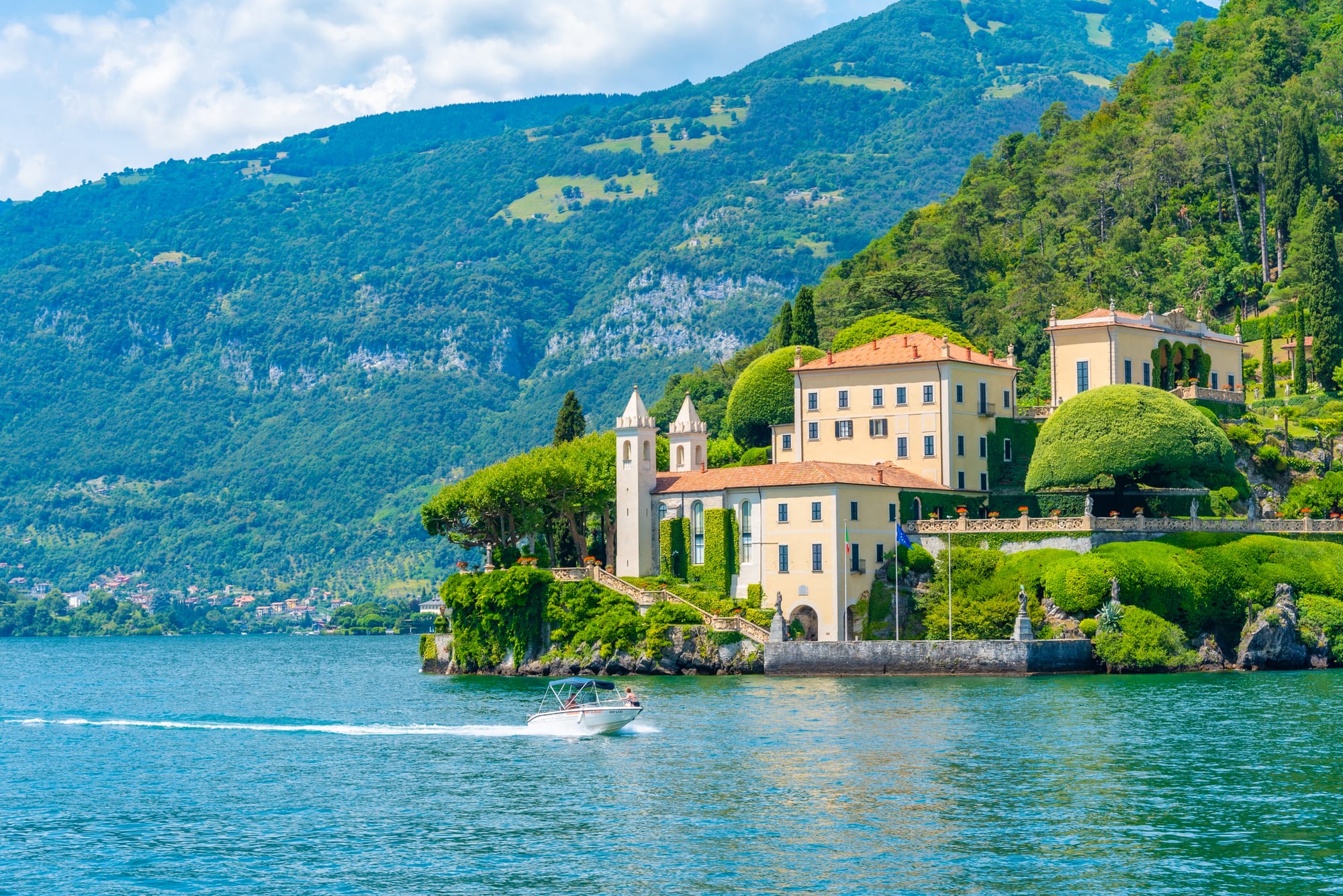
Top things to do in Lake Como: the unmissable icons
From the iconic villages of Bellagio and Varenna to the magnificent Villa del Balbianello and Villa Carlotta, certain landmarks in Lake Como are simply unmissable. This guide covers the absolute must-see sights that offer the perfect introduction to the area's history, art, and natural beauty.
Bellagio, the "Pearl of the Lake"
Situated at the confluence of the lake's three branches, Bellagio is renowned for its enchanting position and timeless charm. Its steep, cobbled lanes, such as the Salita Serbelloni, are lined with elegant boutiques, artisanal shops, and inviting cafes. Visitors should not miss the gardens of Villa Melzi d'Eril, a stunning example of an English-style garden with exotic trees, sculptures, and a serene lakeside promenade. The Basilica di San Giacomo, a Romanesque church dating back to the 12th century, stands as a testament to the town's historical depth.
- For more details, read our complete Bellagio travel guide here.
Varenna, the picturesque fishing village
On the eastern shore lies Varenna, a village that exudes a more rustic and romantic charm. Its waterfront is famous for the Passeggiata degli Innamorati (Lovers' Walk), a suspended walkway that offers breathtaking views. The heart of Varenna is a labyrinth of narrow alleyways and steep staircases that reveal hidden courtyards and vibrant floral displays. High above the village, the Castello di Vezio offers panoramic vistas and a fascinating history, with daily falconry displays adding a unique touch to the visit.
- For more details, read our complete Varenna travel guide here.
Villa del Balbianello, a cinematic masterpiece
Perched on the tip of the Lavedo peninsula, Villa del Balbianello is arguably the most famous of Lake Como's villas. Its terraced gardens and elegant loggia offer unparalleled views of the lake. The villa's allure has not gone unnoticed by Hollywood, having been featured in films such as Casino Royale and Star Wars: Attack of the Clones. A visit here is a journey through the life of its last owner, the intrepid explorer Guido Monzino, whose collection of artifacts from his expeditions is on display.
Villa Carlotta, a haven of art and botany
Located in Tremezzina, Villa Carlotta is a sanctuary for art lovers and garden enthusiasts alike. The villa houses a remarkable collection of neoclassical art, including masterpieces by Canova and Hayez. Its extensive botanical garden is a living museum, featuring a stunning variety of azaleas, rhododendrons, and ancient cedars. A walk through its themed sections, from the rock garden to the bamboo valley, is an experience of sensory delight.
Como, the gateway city
The city of Como itself is a vibrant hub with a rich history. The magnificent Como Cathedral (Duomo), with its intricate Gothic and Renaissance facade, is a must-see. The city's silk museum, the Museo Didattico della Seta, offers a fascinating insight into the industry that shaped the region's economy. A ride on the Como-Brunate funicular provides a spectacular aerial view of the city and the southern part of the lake.
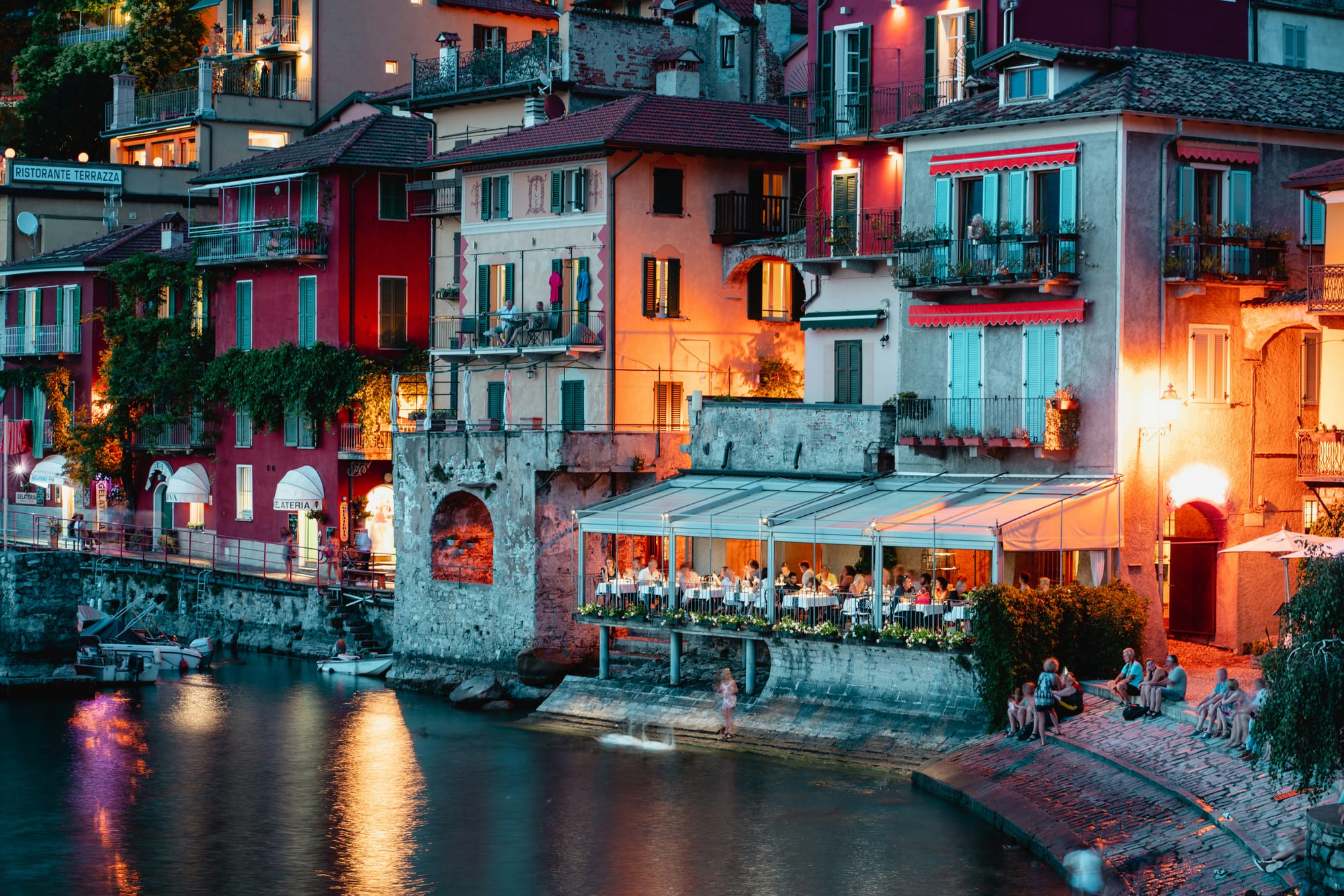
Lake Como off the beaten path: authentic experiences and hidden gems
Beyond the famous villas and bustling towns, Lake Como hides a world of authentic treasures. From the dramatic Orrido di Nesso waterfall to the windswept shores of Dervio and the historic Isola Comacina, this guide will take you off the beaten path to discover the lake's most enchanting hidden gems.
The Orrido di Nesso waterfall
The small, unassuming village of Nesso, located between Como and Bellagio, holds a dramatic secret. Here, two streams converge and cascade into a deep, rocky gorge known as the Orrido. The best view of this natural spectacle is from the ancient Roman bridge, the Ponte della Civera, which spans the gorge at the lake's edge.
Dervio, the "University of Wind"
For the active traveler, the town of Dervio on the northeastern shore is a true paradise. Known locally as the "university of wind," its unique position on the lake makes it a hotspot for sailing, windsurfing, and kitesurfing. Thanks to the reliable Breva and Tivano winds, the conditions are ideal for both beginners looking to take lessons and experts wanting to ride the waves. Its less crowded atmosphere and focus on water sports offer a dynamic and refreshing contrast to the more tranquil pursuits found elsewhere on the lake.
The Greenway dei Patriarchi walking path
This scenic walking path on the western shore connects several charming hamlets from Colonno to Griante. The roughly 10-kilometer trail meanders through ancient villages, past olive groves, and offers consistently stunning views of the lake. The path is mostly flat and well-marked, making it an easy walk suitable for all fitness levels. Be aware that it's a one-way trail, so plan for public transport (bus or ferry) to return to your starting point. It's a perfect way to experience the tranquil beauty of the area at a leisurely pace.
Isola Comacina: Lake Como's only island
The only island on Lake Como, Isola Comacina has a rich and tumultuous history. Today, it is a peaceful oasis, home to archaeological ruins, a small church, and a collection of houses for artists. The island is reachable via a short and frequent taxi boat service from the town of Ossuccio. A stroll around the island offers a unique perspective on the surrounding landscape and a sense of stepping back in time.
The Medieval village of Rezzonico
The village of Rezzonico is a beautifully preserved medieval hamlet dominated by its 13th-century castle. Its quiet, stone-paved streets and small, secluded pebble beach offer a peaceful respite from the more crowded towns, making it a perfect stop for those seeking tranquility.
Hike in the lush Val Sanagra Park
Just above Menaggio, this park offers a network of trails that lead through lush forests, past old mills, and along the Sanagra stream. With a variety of trails ranging from easy family walks to more challenging hikes, it's a perfect destination for nature lovers of all abilities.

What to eat in Lake Como: a food lover's guide
The cuisine of Lake Como, known as cucina lariana, is a reflection of its unique environment, balancing the delicate flavors of the lake with the heartier traditions of the mountains.
- The stars of the lake: Freshwater fish are the undisputed protagonists of the local gastronomy. A must-try is the risotto con filetti di pesce persico (risotto with perch fillets), a creamy and delicate dish that perfectly captures the essence of the lake. Another local specialty is missoltini, shad that are salted and sun-dried, then grilled and served with polenta. This is a dish with ancient roots and a strong, savory flavor.
- From the mountains and pastures: The surrounding mountains provide rich pastures for cattle and goats, resulting in a variety of exceptional cheeses. Look for Semuda, a semi-hard cheese, and the various formaggini di capra (small goat cheeses). Polenta is a staple, often served as polenta uncia, a rich and hearty preparation with melted cheese and garlic.
- Local wines and olive oil: The slopes around the lake also support viticulture and olive groves. The IGT "Terre Lariane" produces both red and white wines that pair beautifully with the local cuisine. The olive oil from this northernmost olive-growing region in Italy is known for its light and fruity character.
A gastronomic journey here is not just about the food itself, but also about the experience. Seeking out a small, family-run trattoria in a quiet village or visiting a local market to sample cheeses and cured meats is an integral part of discovering the authentic taste of Lake Como.
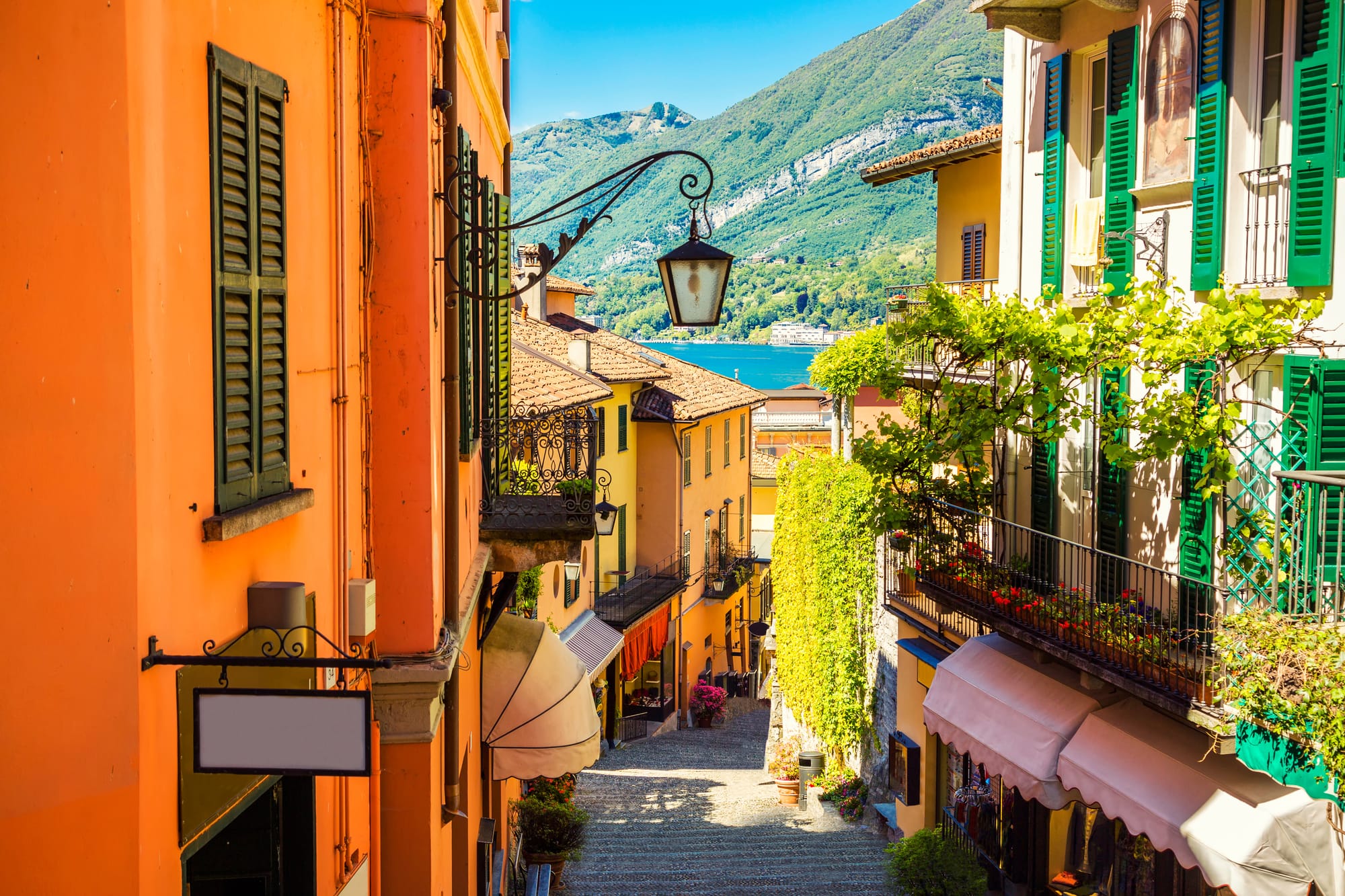
How to plan your trip to Lake Como: a practical guide
The best time to visit Lake Como
The best times to visit Lake Como are during the spring (April to June) and early autumn (September to October). Here’s a quick breakdown by season:
- Spring (April-June): Perfect for pleasant weather and seeing the famous gardens in full bloom.
- Summer (July-August): Hot and sunny, ideal for swimming, but expect the largest crowds and highest prices.
- Autumn (September-October): Features beautiful fall colors, mild weather, and fewer tourists.
- Winter (November-March): Very quiet and peaceful, but many hotels, restaurants, and ferry services operate on a reduced schedule.
How to get to & around Lake Como
- Getting to Lake Como
The main gateways to Lake Como are Milan's international airports. Your best options are:- Milan Malpensa (MXP): The largest airport, with direct train connections (Malpensa Express) to Milan's train stations.
- Milan Linate (LIN): The closest airport to Milan's city center.
- Milan Bergamo (BGY): A major hub for low-cost airlines across Europe.
From Milan, the easiest way to reach the lake is by train. There are frequent services from Milano Centrale to Varenna-Esino (on the eastern shore) and from Milano Cadorna or Milano Centrale to Como San Giovanni. We recommend booking tickets in advance on the official Trenitalia website.
- Getting around Lake Como
Once you've arrived, the public ferry system is by far the most efficient and scenic way to explore. Run by Navigazione Laghi, the service includes:- The mid-lake shuttle, which easily connects the main towns of Bellagio, Varenna, Menaggio, and Tremezzina.
- The fast ferry (servizio rapido), which travels the length of the lake more quickly.
- Car ferries (traghetti), operating between Varenna, Bellagio, Menaggio, and Cadenabbia.
While renting a car offers flexibility, be aware that the lakeside roads, like the famous Strada Regina, are narrow and parking in villages is extremely limited and expensive. Driving is recommended only if you are an experienced driver or staying in a location not well-served by ferries.
Where to stay in Lake Como
The choice of where to stay depends on your travel style and budget. Here are a few suggestions:
- For first-time visitors and classic luxury: Bellagio or Varenna offer a central location and iconic views.
- For easy access to villas: Tremezzina, Cadenabbia, or Lenno are ideal bases for exploring Villa Carlotta and Villa del Balbianello.
- For a quieter, local feel: Consider charming smaller villages like Argegno on the western shore or Dervio on the eastern shore.
- For families: Menaggio often provides more spacious accommodation options and has a lovely lakeside promenade (lido).
How many days do you need in Lake Como?
A stay of three to five days is recommended to truly appreciate the highlights without rushing. This gives you enough time to immerse yourself in the lake's unique atmosphere.
- In 3 days: you can comfortably explore the famous "mid-lake triangle" of Bellagio, Varenna, and Menaggio, including a visit to one major villa.
- In 5 days: you can add a day trip to Como city and its funicular, explore a hidden gem like the Orrido di Nesso, and enjoy a relaxing day by the water.
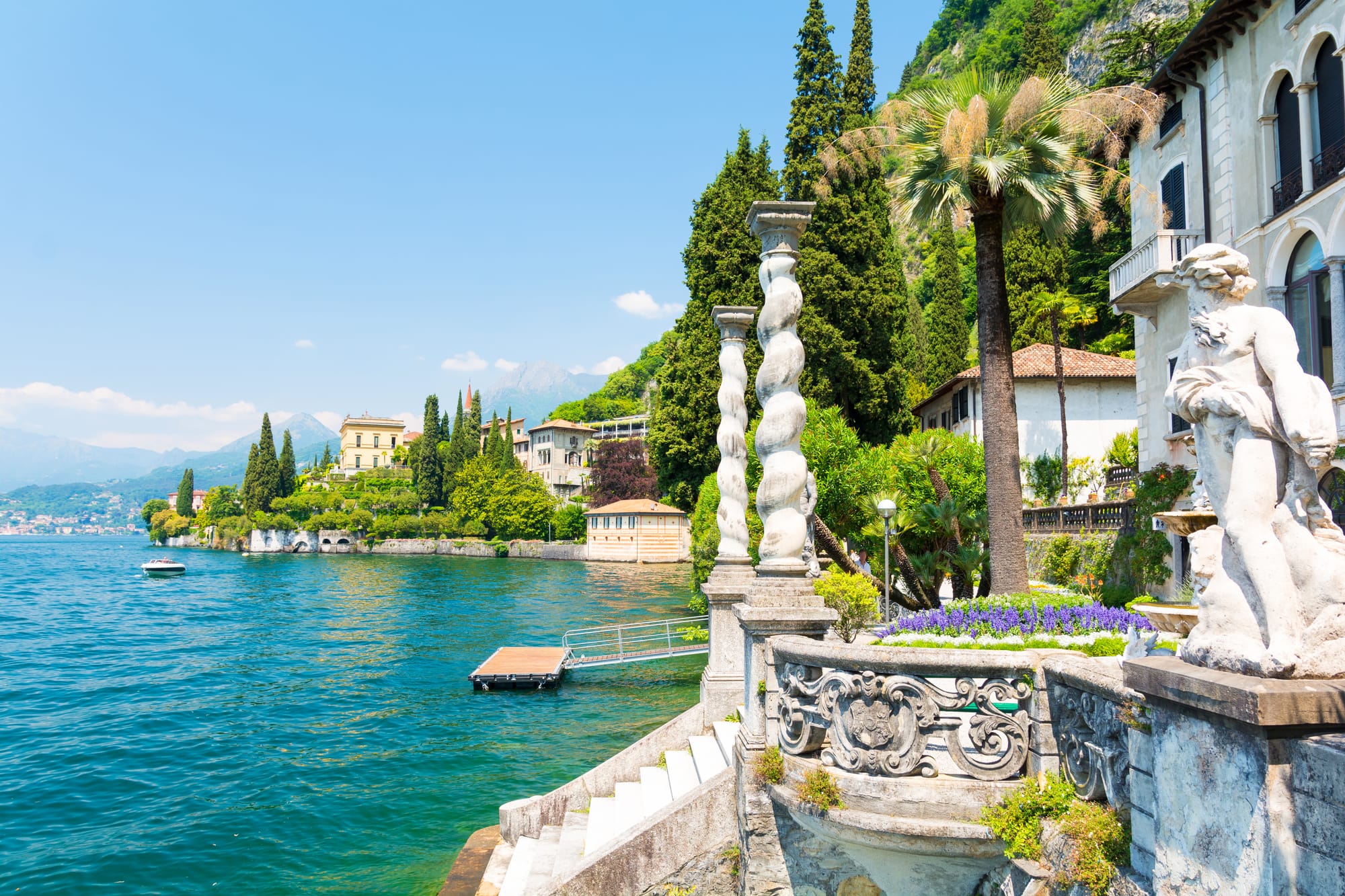
FAQs about visiting Lake Como
Is Lake Como expensive?
- Lake Como can be an expensive destination, particularly in the popular central lake area and during the high season. However, it is possible to visit on a more moderate budget by staying in less touristy villages, dining at local trattorias away from the main squares, and utilizing public transportation.
Do I need a car to explore Lake Como?
- While a car is not essential, it is certainly useful for exploring the beauty of Lake Como in depth. We recommend it for a complete tour of the lake. The extensive public ferry network connects all the main points of interest. As an alternative to driving, you can use a combination of ferries and local buses to reach the most iconic areas.
What is the best town to use as a base?
- For first-time visitors to the area, the towns of the "golden triangle" — Bellagio, Varenna, and Menaggio — are excellent bases thanks to their beauty and excellent ferry connections. Both Como and Varenna have the advantage of being on the main railway line from Milan.
How should one dress for a trip to Lake Como?
- The dress code is generally smart casual, reflecting the elegant atmosphere of the area. Comfortable walking shoes are a must for the cobbled streets and hiking trails. It is also advisable to bring layers, as the weather can change quickly, and a light jacket is often welcome in the evenings, even in summer.
Which Italian lake is best to visit: Como, Garda, or Maggiore?
- This is a common question for travelers exploring Northern Italy, and the best answer depends entirely on the type of experience one is seeking. Each of the major Italian lakes has a distinct personality and caters to different travel styles.
- Choose Lake Como for dramatic romance and classic elegance.
- Choose Lake Garda for diversity, family fun, and active pursuits.
- Choose Lake Maggiore for peaceful elegance and artful islands.
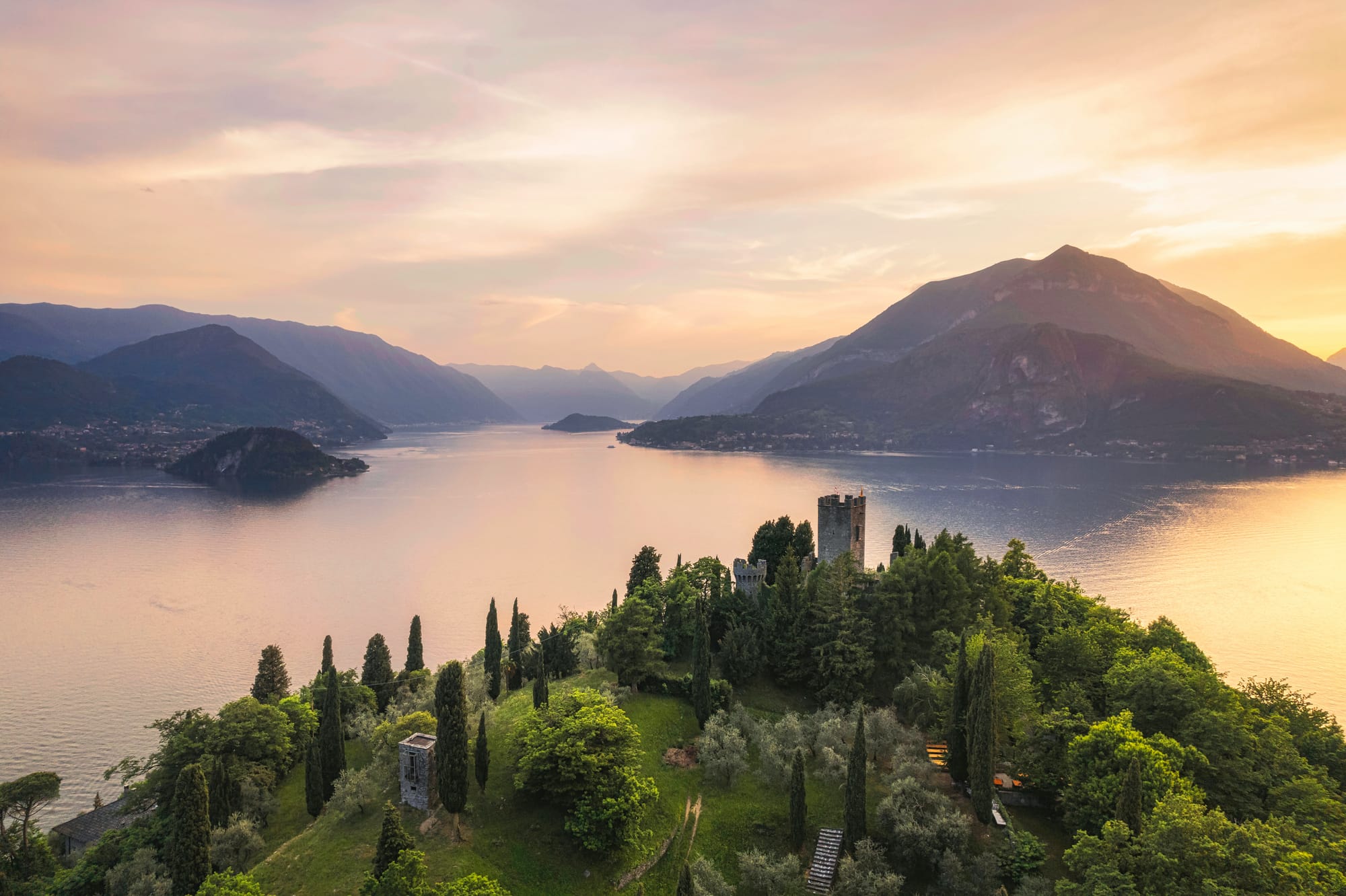
Lake Como is more than just a beautiful destination; it is an experience that engages the senses and enriches the soul. It is a place that rewards the curious traveler with layers of history, culture, and natural beauty waiting to be discovered.
Whether it is the grandeur of its iconic villas, the quiet charm of a hidden alleyway, or the exquisite flavor of a traditional dish, Lake Como offers a journey into the heart of Italian elegance. It is a chapter in any Italian itinerary that will be remembered long after the journey ends, a timeless allure that continues to call visitors back to its enchanting shore.
Inspired to plan your journey? Find everything you need at:
- The ultimate guide to Lake Como
- Varenna, Lake Como: the jewel of the golden triangle
- An insider's guide to Bellagio
- The ultimate guide to Milan
- The ultimate guide to Venice
Explore Lake Como like a local with our in-depth guides.
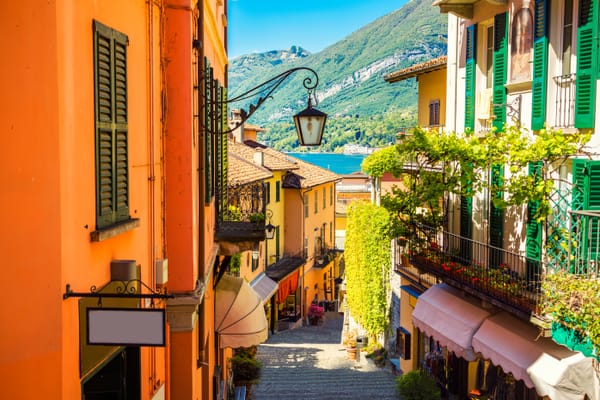

``↩
